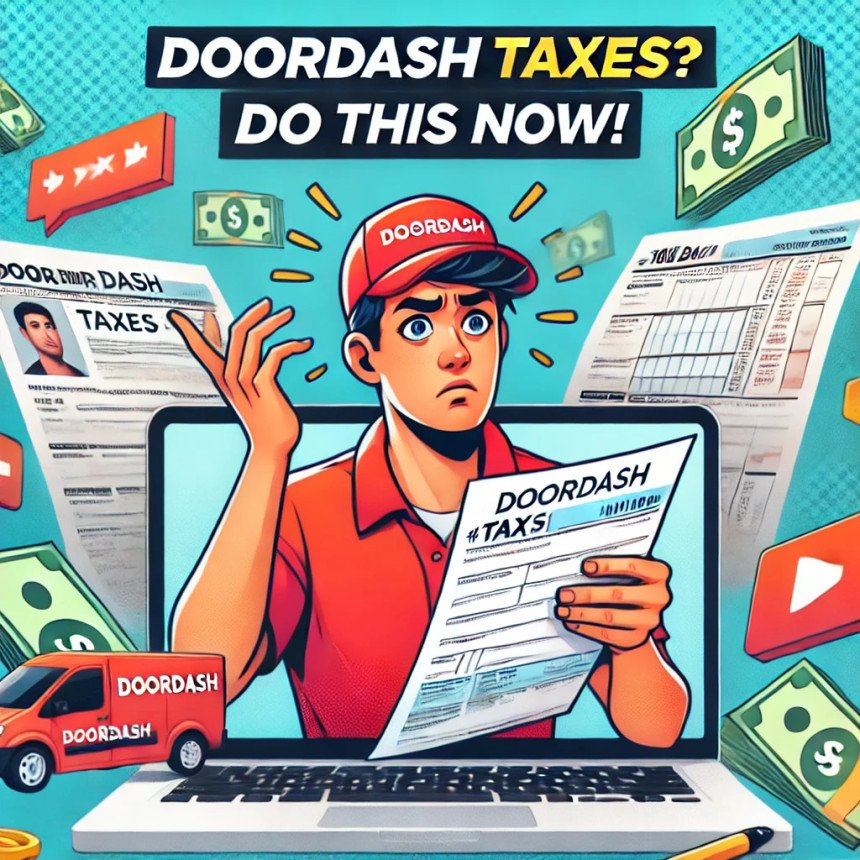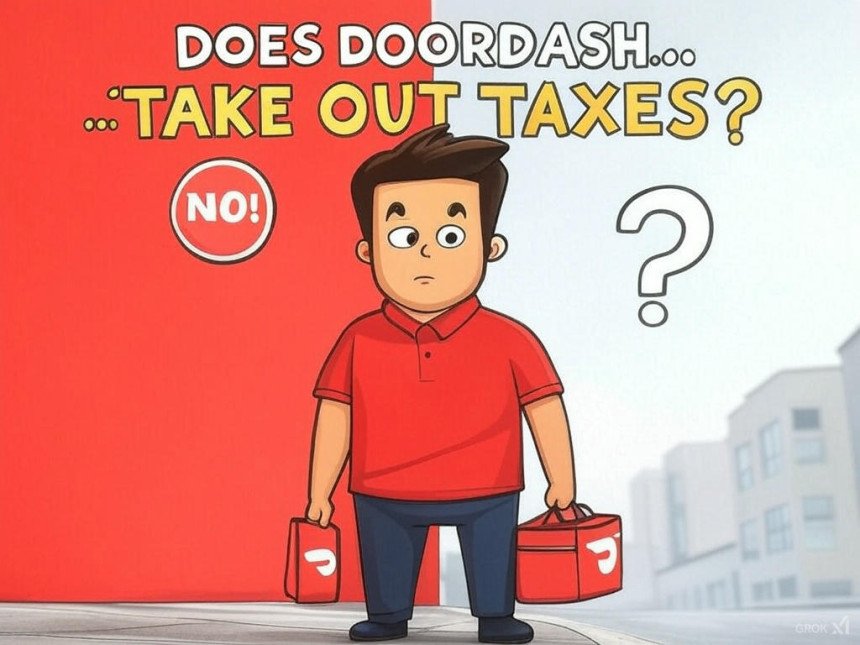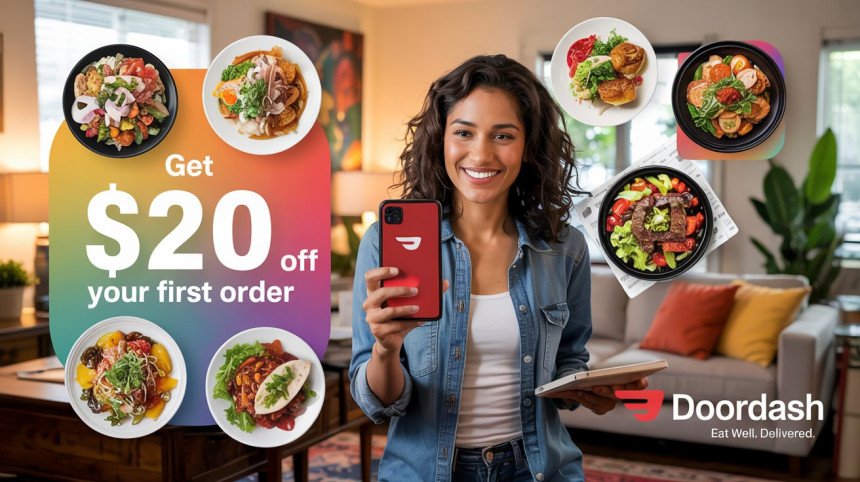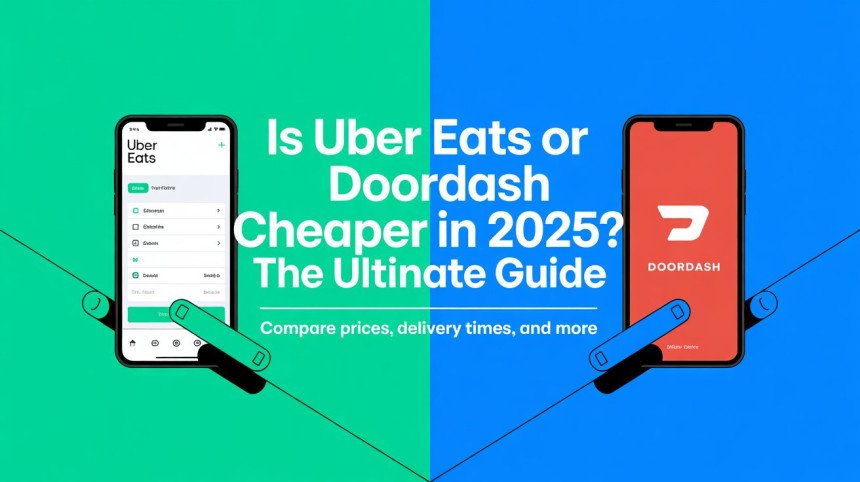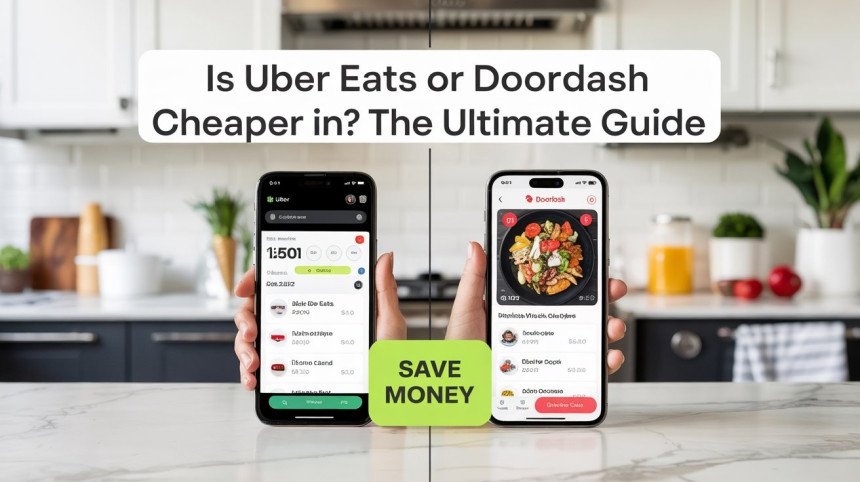
Uber Eats vs DoorDash: Which Food Delivery App is Really Cheaper in 2025?
You're hungry, scrolling through your phone, ready to summon dinner with a few taps. The familiar logos of Uber Eats and DoorDash glow invitingly. But then the practical question hits your mind (and your wallet): is Uber Eats or DoorDash cheaper? It seems like it should be a straightforward answer, but anyone who orders regularly knows it's a labyrinth of service fees, delivery charges, 'busy area' costs, and shifting promotions.
Uber Eats vs DoorDash
Let's slice through that confusion right now. The absolute truth for 2025 is: neither Uber Eats nor DoorDash holds the title of 'cheapest' all the time. Which app saves you more cash can flip-flop based on your specific order, where you live, the time you order, the deals running at that exact moment, and crucially, whether you're subscribed to their premium plans (Uber One or DashPass).
But don't click away! This isn't just another "it depends" non-answer. By the time you finish reading this guide, you'll have a crystal-clear understanding of:
- Exactly how both Uber Eats and DoorDash calculate their often-confusing fees in 2025.
- The real dollars-and-cents value of Uber One vs. DashPass – are they actually worth it for you?
- The sneaky "hidden costs" and factors (like restaurant markups!) that inflate your bill without you realizing it.
- Most importantly, a simple process to figure out which app will likely be cheaper for your very next craving.
We're diving deep into the food delivery cost comparison for 2025. Ready to stop overpaying and start ordering smarter? Let's get into it.
Decoding the Bills: How Uber Eats & DoorDash Calculate Your Cost
Ordering food delivery isn't just paying the menu price plus a bit for delivery anymore. Both platforms layer multiple charges onto your subtotal. Getting a handle on these is fundamental to any fair price comparison. While the precise numbers shift like sand, the categories of fees you'll encounter in 2025 remain largely consistent:
This is the charge everyone notices first – the cost assigned for the driver's journey.
- Uber Eats: This fee often scales with how far the restaurant is from you. You'll frequently see $0 delivery promotions tied to specific restaurants or offered as a core benefit of their Uber One subscription.
- DoorDash: Similarly factors in distance, but its calculation can sometimes feel less predictable day-to-day. Their DashPass subscription heavily promotes $0 delivery fees on qualifying orders.
- The Catch (Both): Don't get attached to the delivery fee you see! It's often dynamic, meaning it can fluctuate based on how many drivers are available versus how many people are ordering in your zone right now. That $1.99 fee might jump to $5.99 during a dinner rush.
Service Fees: What Are You Paying For?
Often the most substantial (and arguably most opaque) fee added to your order. It's typically calculated as a percentage of your food subtotal.
- Uber Eats: Explains this fee helps run the platform – think app maintenance, customer support operations, and payment processing. A key benefit for Uber One members is often a reduction in this percentage-based fee.
- DoorDash: Gives a similar justification, stating it supports their operational costs. It's crucial to note that DoorDash's DashPass subscription historically focuses on eliminating the delivery fee, not significantly reducing this service fee for most orders. Always double-check the fine print!
- Transparency Check (Both): While listed at checkout, the exact percentage or calculation isn't always immediately obvious. This makes comparing only the delivery fee misleading. You must look at the combined impact of delivery and service fees.
Small Order Fees: Penalties for Quick Bites?
Just need a single burrito or a fancy coffee delivered? Beware the small order fee. If your food subtotal doesn't hit a certain minimum (commonly around $10-$15, but this varies by location and app), you might get dinged an extra couple of bucks.
- Uber Eats & DoorDash: Both use this fee. Why? It helps make very small deliveries financially worthwhile for the platform and the driver. One of the biggest draws of their subscription plans (Uber One/DashPass) is often the waiving of this fee on eligible orders – a huge plus if you're a frequent solo orderer.
Think of rush hour traffic, but for food delivery. When demand skyrockets (lunch/dinner peaks, rainy evenings, major sports events), and driver supply is tight, costs go up.
- Uber Eats: May explicitly add a 'Busy Area Fee' or similar surcharge onto your bill during these peak times.
- DoorDash: Also adjusts pricing based on demand, though it might be baked into slightly higher delivery or service fees rather than a separate line item.
- The Impact: This is a major wild card. An app that looks like the budget-friendly choice at 3 PM might become the pricier option by 6 PM due to these demand-based adjustments.
Taxes & The Optional (But Important) Tip
Don't forget government-mandated sales tax, calculated based on your local rate. And then there's the tip. While technically optional on both platforms, tipping your delivery driver is standard practice and essential for their earnings (most fees don't go entirely to the driver). Factor in a fair tip (15-20% of the subtotal is a common guideline) when you're mentally calculating the true final cost difference.
The Subscription Showdown: Uber One vs. DashPass in 2025
If you're ordering food delivery more than a couple of times a month, the siren song of subscription plans – Uber One and DoorDash's DashPass – becomes loud. Typically costing around $9.99 per month (always check current pricing), they promise significant savings. But do they deliver value in 2025? Let's break down their usual offerings:
- $0 Delivery Fee: Generally applies to eligible restaurant and grocery orders exceeding a minimum subtotal (e.g., $15).
- Reduced Service Fees: This is often the game-changer. Uber One members typically get a percentage discount (like 5% or even 10%) off the service fee on eligible delivery orders. On larger orders, this can add up quickly.
- Waived Small Order Fees: No penalty for smaller cravings on eligible orders.
- Other Perks: Often includes discounts on Uber rides (a big plus if you use both services), exclusive member promotions, potentially enhanced customer support, and priority matching with higher-rated drivers.
Breaking Down DashPass Perks
$0 Delivery Fee: The main draw, applying to eligible restaurant, grocery, and convenience store orders over a set minimum (e.g., $12-$15 – sometimes slightly lower than Uber One's minimum).
Reduced Service Fees (Read Carefully!): Unlike Uber One, DashPass traditionally doesn't offer significant percentage reductions on the service fee for delivery orders. Its savings focus squarely on the delivery fee itself. However, they often offer discounts (like 5%) on pickup orders for members.
Waived Small Order Fees: On eligible orders.
Other Perks: Access to exclusive DashPass offers, potential cashback partnerships with credit cards, discounts on those pickup orders.
Is a Subscription Worth It For You? (Calculating the Break-Even)
Time for some honest math based on your habits:
- Count Your Orders: Realistically, how many times do you order delivery each month? Be honest!
- Check Past Fees: Look at a few recent order receipts (if possible). What was your average delivery fee? What was your average service fee (especially relevant for Uber One)?
- Do the Math:DashPass: If the monthly fee is $9.99 and your average delivery fee saved is $4, you need to place about 2-3 orders ($9.99 / $4 ≈ 2.5) just to cover the cost via delivery fee savings alone.
- Uber One: If the fee is $9.99, and you save $4 on delivery plus $2 on the service fee per order (total $6 savings), you break even after just 1-2 orders ($9.99 / $6 ≈ 1.7).
- Factor Small Orders: If you constantly place orders under the minimum, the value of waiving that fee goes way up. Add that potential saving to your calculation.
- Weigh Extra Perks: Do you take Ubers frequently? Uber One's value increases. Do you prefer pickup sometimes? DashPass's pickup discounts might appeal more. Check the latest perks directly on their sites (like the official Uber One page or the DashPass benefits page).
The Verdict: If you're ordering 2-3+ times per month, a subscription likely saves you money. Uber One often provides slightly more comprehensive savings due to the service fee reduction, especially on larger orders. However, DashPass might have a lower minimum order threshold in some areas, making it better for smaller frequent orders. Analyze your own specific usage
Why Your Neighbor Might Pay Less (Or More): Key Factors Influencing Cost
It's maddening but true: you and your next-door neighbor could order the exact same meal from the same place at the same time and see different final prices. Here are the major variables at play in 2025:
Location, Location, LocationDelivery economics are hyper-local. Fees, restaurant availability, and driver density vary significantly between cities, suburbs, and even different neighborhoods within the same city. Expect higher 'Busy Area' fees in dense downtown cores during peak times, while further-flung suburbs might see higher base delivery fees.
Restaurant Choices & In-App Pricing Differences (The Underrated Cost Driver!)Pay attention here – this is critical and often missed! Restaurants frequently mark up their menu prices on delivery apps compared to what you'd pay dining in or ordering directly. Crucially, this markup isn't standardized between Uber Eats and DoorDash. One platform might have negotiated a better commission rate or pricing structure with a specific restaurant chain or local favorite, leading to lower item prices before any platform fees are added.
- Actionable Tip: Got your heart set on a specific restaurant? Quickly open both apps, find the items you want, and compare the menu prices directly. The difference can sometimes be more significant than the delivery fee itself! (This addresses the common question: "Why is my DoorDash/Uber Eats order more expensive than the menu price?")
Simple physics: the further the driver has to travel, the higher the delivery fee is likely to be. And as we've covered, ordering during peak meal times (roughly 11:30 AM - 1:30 PM for lunch, 5:30 PM - 8:00 PM for dinner), weekends, or during bad weather almost guarantees encountering dynamic pricing or 'Busy Area' surcharges.
Promotions, Discounts, and Promo Codes
Both Uber Eats and DoorDash are constantly vying for your business with a barrage of deals. These can include:
- Percentage discounts off your subtotal (e.g., 20% off).
- Fixed dollar amount discounts (e.g., $5 off $25).
- Buy-One-Get-One (BOGO) offers on specific items or restaurants.
- Temporary $0 delivery fee promotions for certain partners.
- Special deals exclusively for subscription members.
- First-time user incentives.
Never place an order without quickly checking the "Offers," "Deals," or "Promotions" section within both apps. A well-timed promo code can easily swing the cost pendulum, making one app the clear winner for that specific order. (Perhaps check out our complete guide to food delivery promo codes for the latest deals.)
Beyond the Fees: Other Considerations (Value, Experience)
While this article focuses on cost, your overall experience matters too:
- App Interface & User Experience: Which app do you find easier and more pleasant to navigate? It's subjective, but important for satisfaction.
- Delivery Speed & Reliability: Consistency in delivery times and driver professionalism varies. While difficult to measure objectively across the board, extremely long waits or frequent issues might make a slightly more expensive but reliable service worth it. Local community forums (like Reddit) can sometimes offer insights for your specific area.
- Customer Support Experiences: When things go wrong (missing items, cold food), how easy is it to get a resolution? Responsive and fair customer support adds significant value.
So, Who Wins the Price War in 2025? (The Nuanced Answer)
After dissecting all the fees and factors, we circle back to the core question. While there's no permanent champion, we can identify scenarios where one might have an edge:
- DoorDash could be slightly cheaper IF:You primarily place orders just meeting the DashPass $0 delivery minimum, where the lack of a service fee discount matters less.
- You frequently utilize their pickup discounts via DashPass.
- The specific restaurants you favor happen to have lower menu markups on DoorDash.
- You snag a DoorDash-specific promo code.
- Uber Eats could be slightly cheaper IF:You're an Uber One member placing frequent or larger orders where the combined $0 delivery and reduced service fee offer significant savings.
- You also benefit from the bundled Uber ride discounts.
- The restaurants you like have better pricing on Uber Eats' platform.
- You find a great Uber Eats-specific deal.
The inescapable conclusion?
The only guaranteed way to know which is cheaper for your next meal is to perform a quick, real-time price check. Build your identical order cart in both apps right up to the final checkout screen (before confirming payment). Compare the grand totals, including all fees, taxes, applied promotions, and your intended tip.
Pro Tips: How to Save Money on Both Uber Eats and DoorDash
Stop pledging loyalty! The smartest approach is to leverage both platforms strategically:
- Always Price Check (Seriously!): Before you hit that order button, spend 60 seconds building the same cart in the competing app. Compare the final totals. This is the single most effective saving strategy.
- Become a Promo Hunter: Make it a habit to check the "Offers/Deals" tab in both apps every single time you order.
- Embrace Pickup: If the restaurant isn't too far, selecting the pickup option within the app often eliminates most fees (delivery and service), getting you close to in-restaurant pricing while retaining app ordering convenience. DoorDash, in particular, often incentivizes this.
- Explore Beyond the Duopoly: Are there other players like Grubhub active in your area? Or local delivery cooperatives? Don't rule them out – they might offer competitive pricing. (See how they stack up in our full food delivery app comparison.)
- Consider Ordering Direct: For some restaurants, especially local pizzerias or places with their own delivery staff, calling them or using their own website might be cheaper. You usually lose app tracking, but it's worth investigating for your regular spots.
- Use Subscriptions Intelligently: Only subscribe if your math shows you'll break even based on your actual order frequency and typical savings. If you commit, check if an annual plan offers better value than paying monthly.
- Team Up for Group Orders: Ordering with roommates, family, or colleagues makes it easier to hit those free delivery minimums and potentially split service fees across more items.
The Bottom Line: Be a Smart Comparer in 2025
Navigating the Uber Eats vs. DoorDash cost comparison in 2025 requires being an informed and slightly strategic consumer. While subscriptions like Uber One (with its service fee discount) and DashPass (focused on delivery fees) offer pathways to savings for frequent users, the dynamic nature of pricing, hidden restaurant markups, and ever-changing promotions mean the "cheapest" app is a moving target.
Forget blind loyalty. Understand the fees, know your ordering patterns, leverage promotions, and – most importantly – always compare the final price in both apps before you confirm your order. Do that, and you'll ensure you're getting the best possible deal every time hunger calls. Your future self (and your bank account) will thank you.

